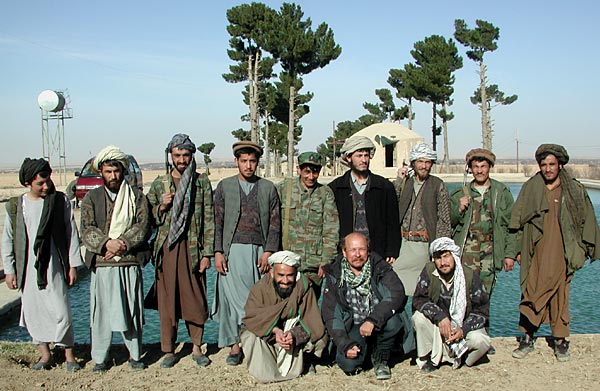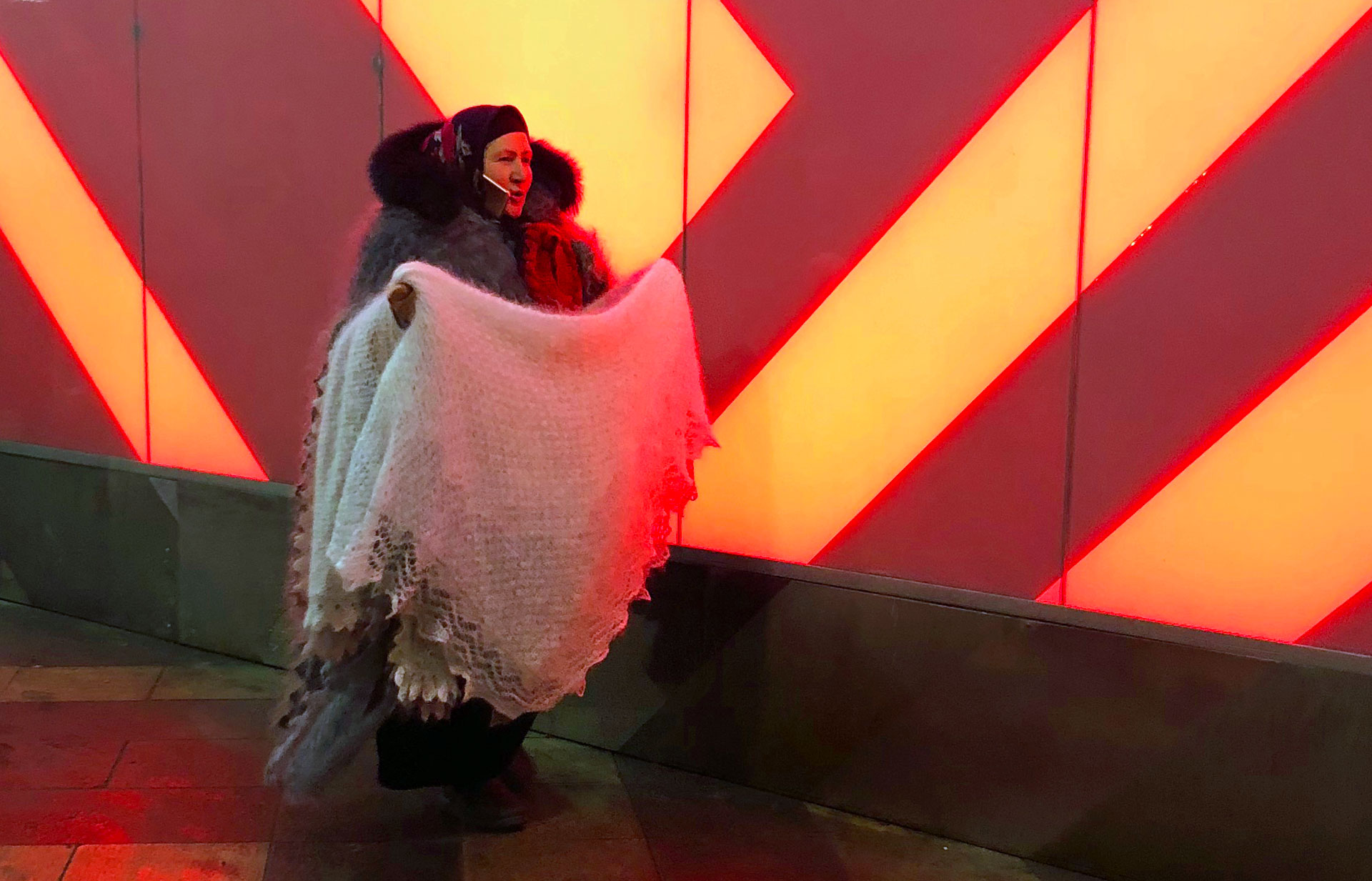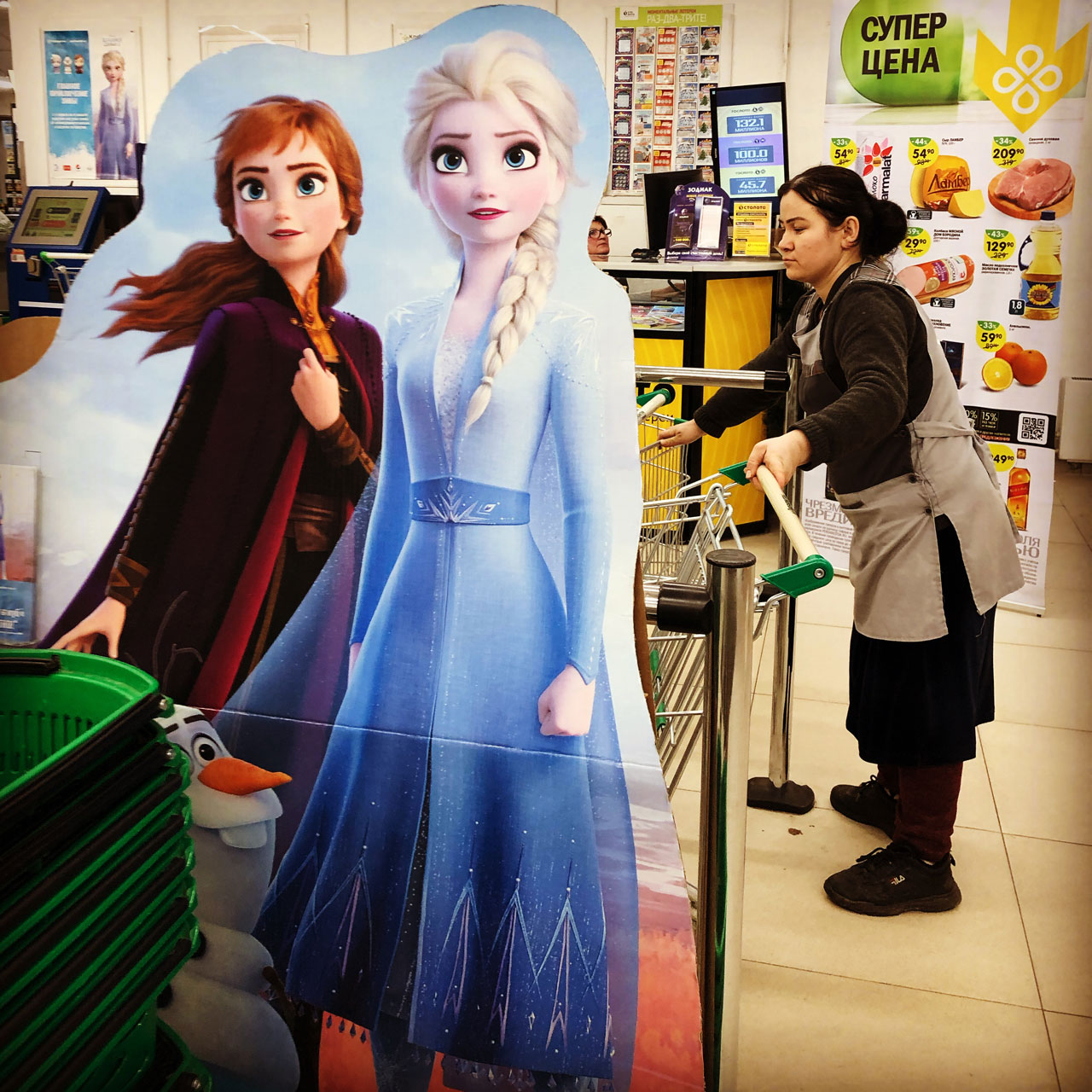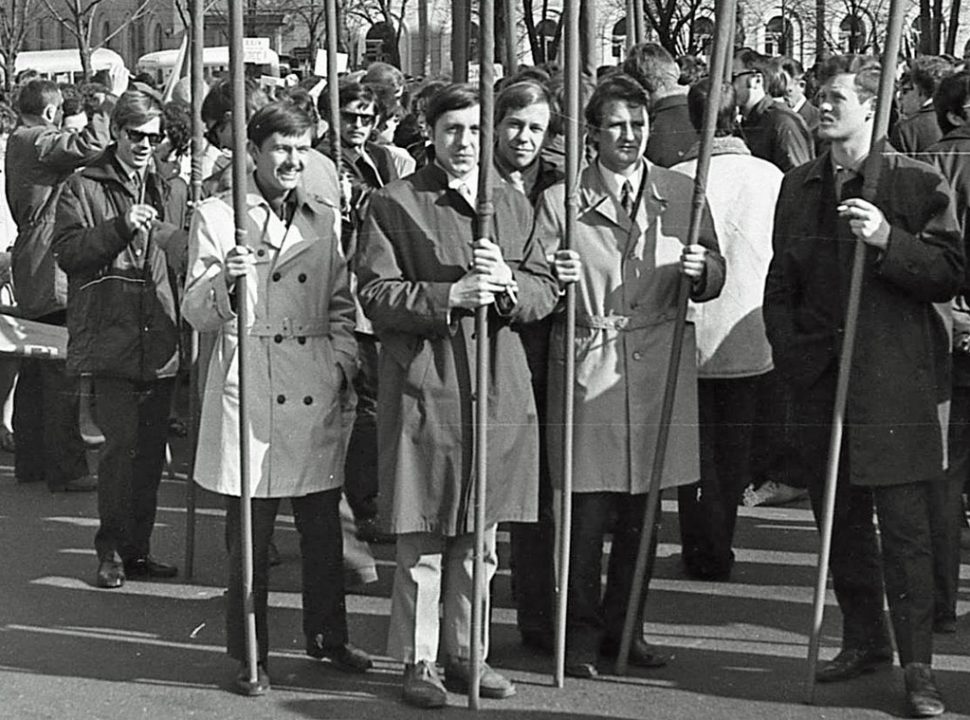All Afghan men are warriors. The old ones were fighters in the past, the young ones will become soldiers in the future.
There is a chance, though, this vicious circle will be broken and men with be just men, not fighting men. But it’s up to the men to achieve that.
This page is about the fighting men of the Northern Alliance army which defeated the Taliban regime with a little help from American friends. The mujahedeen are no angels: many human rights groups in Afghanistan accuse them of killings, raping, and other excesses in the early 1990s, which alienated the population and made it easier for the Taliban to come to power.
These two young fighters were holding positions on Mt. Ai-Khanum overlooking Taliban defenses along the river Pyanj in September 2001.
This young mujahed asked for a photo with his favorite Kalashnikov assault rifle near the Old Kabul Road in September 2001. Hopefully he will be able to see it on the Internet one day.
Gen. Baba Jan stands inside the air traffic control tower of the Soviet-built Bagram air base in September 2001.
His soldiers display their weaponry during a military parade a few weeks before American planes and Northern Alliance forces bombed and shelled the Taliban out of Kabul. Most fighting men of the Northern Alliance army, despite their young age, had been well trained and armed. Old but operational and efficient Soviet-made rifles, machine guns, and bazookas made up the backbone of their armory in addition to heavy multiple-rocket launchers, anti-aircraft guns, and tanks. Before the Americans appeared on the scene, the Alliance had received most of military aid from Russia and Iran. The Northern Alliance united numerous armed groups led by rival warlords who had decided to put aside their decades-long differences to get rid of the Taliban. The truce still remains in force despite individual clashes between some groups or their members, that occur to this day in various parts of Afghanistan.
One of such warlords is Gen. Mohammed Daoud, who commanded a Northern Alliance group in Taloqan, Takhar Province, when it confronted the Taliban held at bay in the neighboring city of Kunduz in November 2001.
He was one of the few field commanders who hosted regular press conferences for numerous journalists based in Taloqan. All the journalists left the city when a Swedish cameraman was killed by robbers. But since Kunduz had fallen to the Northern Alliance a couple of days before the slaying, the story was dead anyway, and the journalists moved on to other places. Daoud Khan and other Afghan warlords welcomed the American involvement in the fight against the Taliban but invariably stressed they would allow the U.S. troops to stay on Afghan soil only for as long as it would be necessary to defeat the Taliban and eradicate the terrorist al-Qaida network. The current deadline is probably the date the United States cuts its money supply or the government stops sharing proceeds with the warlords.
The following three photos show Northern Alliance fighters shortly before the final assault on Kunduz, the center of the province of the same name.
The picture to the right was taken in the small town of Dawlatabad, Balkh Province, in February 2002 at a time the interim government in Kabul announced plans to disarm all the paramilitary groups in the country as the first step towards establishing a national army.
The plans were not welcomed by the men who had fought most of their lives and who deeply mistrusted the government – any government. I talked with many mujahedeen in Dawlatabad and other neighboring towns and villages, and they all said they would try and keep their weapons, just in case. Yet despite this opposition, the government proceeded with its disarmament plans as well as with its program to create a police force. In Mazar-e-Sharif, three rival warlords agreed to set up a joint police unit to maintain public order in the city and check incoming traffic for weapons to reduce the presence of armed people on the streets. Check points were set up on all the roads leading into Mazar-e-Sharif, manned by members of the new police force who were armed with rifles and machine guns. The check points also served as temporary storages for weapons that armed visitors were expected to check in upon arrival and claim back on leaving the city.
All the “cops” were issued with brand-new green woolen uniforms and caps and with shiny black boots.
















